Those who want to hike are usually drawn to the Alps, Nepal, the Way of St. James or at least to a famous long-distance hiking trail such as the Kungsleden, which leads to the North Cape. But the real adventures await elsewhere, where there are no hordes of hikers. Where the landscape is unknown and the hiking trail is often not even signposted.
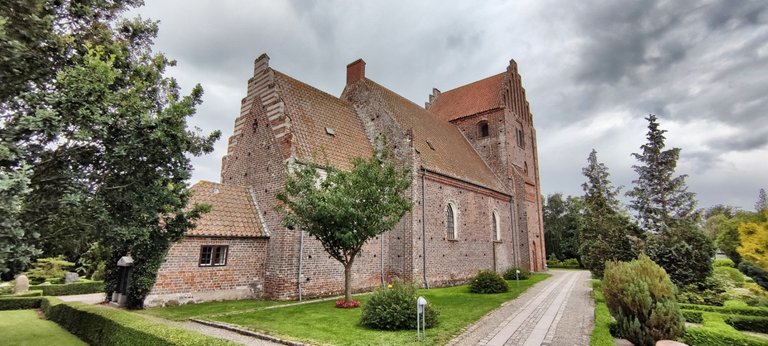 The churches are very old along the Munkevejen
The churches are very old along the Munkevejen
Denmark is not a classic hiking country, but the Danish Baltic Sea island of Møn is famous for its chalk cliffs - and a wonderful hiking destination for the curious. The Baltic Sea island now also has a hiking route that has been awarded top marks. The Camønoen is a 175-kilometer circular trail around the island of Møn, but it also leads over the islands of Bogø and Nyord and has the lovely title of "friendliest hiking trail in the Danish kingdom".
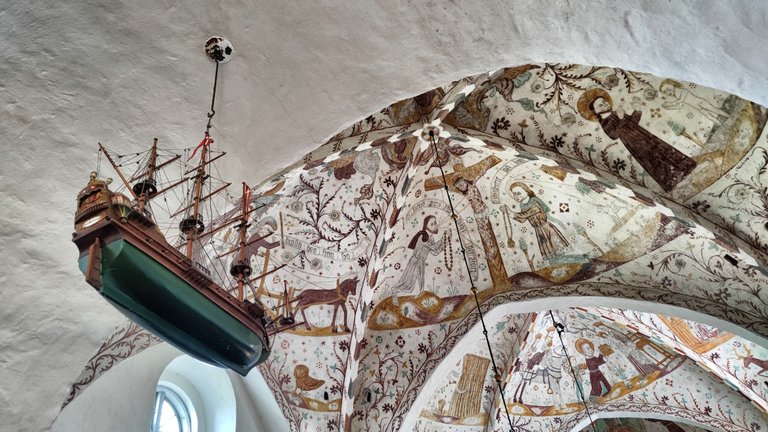 In every church a ship is hamnging down
In every church a ship is hamnging down
A pilgrims road
Anyone who wants to walk the 430 kilometers on the Munkevejen from Rødbyhavn to Roskilde in Denmark as a pilgrim on foot or by bike will not only get to know another European country, but will also find a magical, idyllic and - still - lonely natural landscape that touches, relaxes and makes you happy.
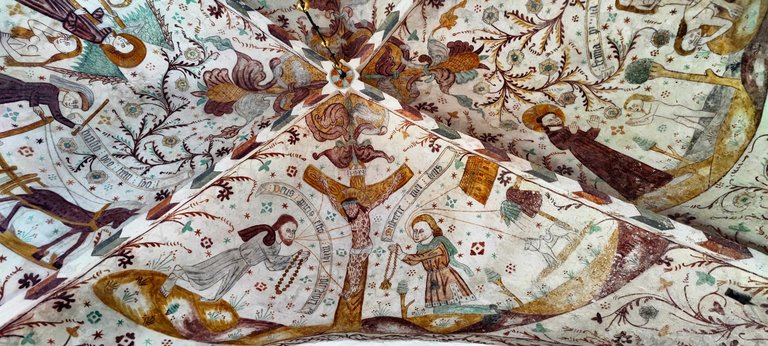 The pictures are incredible
The pictures are incredible
The Munkevejen is actually a cycle path that stretches for over 430 kilometers from Rødbyhavn to Roskilde. But suddenly it appears here on Mon: in the middle of a magical, idyllic and lonely natural landscape that we walk through on the way to the west coast.
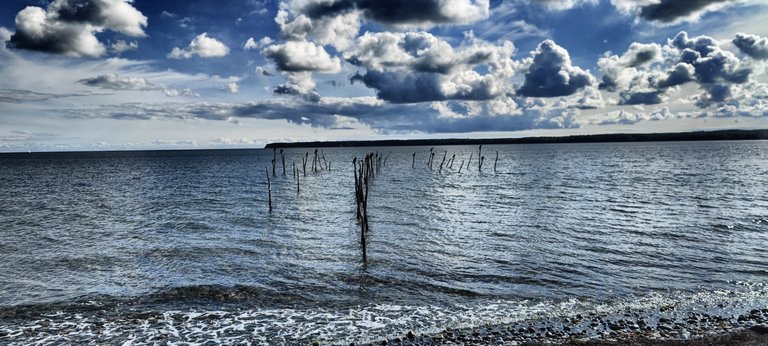 The Baltic Sea rushes around the hikers
The Baltic Sea rushes around the hikers
The hike suddenly becomes a pilgrimage in a time when individual trips with luggage are the norm in favor of group hikes with group pressure and luggage transport. Not that the Monk's Path suddenly reveals a spiritual component. No, it doesn't. But you get a sense of times gone by when Christianization was slowly progressing in northern Europe.
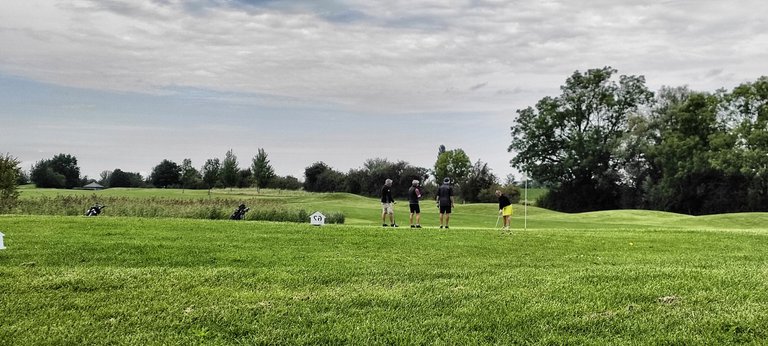 A golf court on the way of the monks
A golf court on the way of the monks
The oldest church
Elmelunde Church, for example, is the oldest stone church on Møn. It dates from around 1075. The church has an impressive location with a wonderful view, and the Bronze Age mound indicates that the place has always been a center of worship.
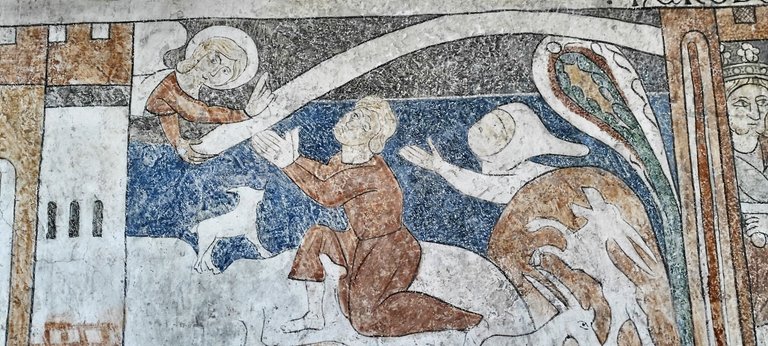 Bible lessons
Bible lessons
Towards the end of the 13th century, the "Elmelundeværkstedet" ("the workshop of Elmelunde") created the first paintings in this church, giving the famous fresco painters their name. They are crazy pictures, line drawings full of creativity that cannot be seen anywhere else. The legions of hymn books on the shelves testify to the locals' faith, which is so modern.
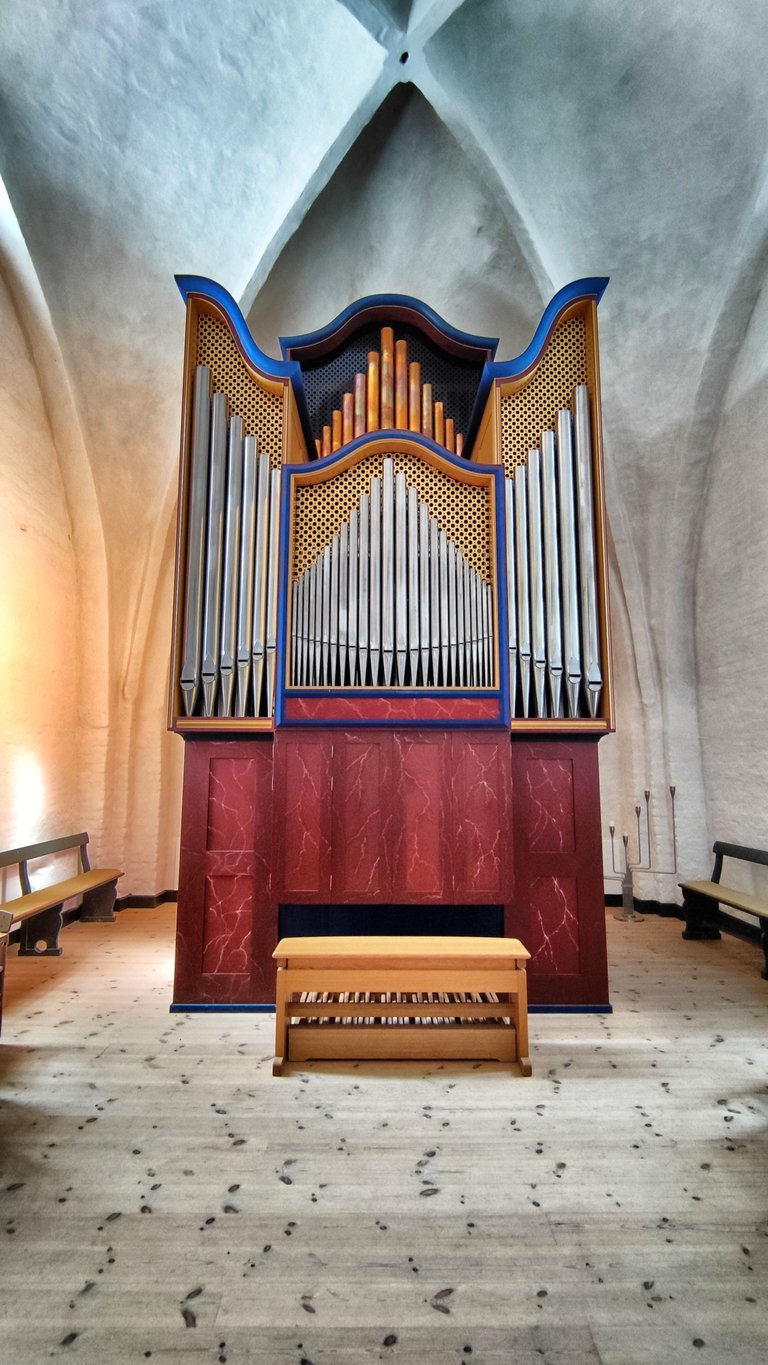 Danish style
Danish style
But along the way there are also impressive documents from much earlier religious schools. A long mound bears witness to an earlier society without kings, and would not be particularly noticeable if it were not for a sign pointing to it. According to the old legend of King Green and his wife Fane, it was also known as Grøn Jægers Høj (Green Hunter's Hill) or Fanesalen (Fane Hall).
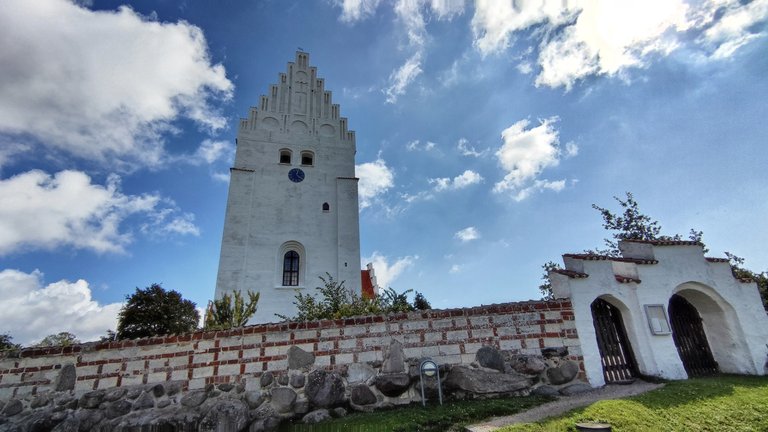 Like a castle at the Island
Like a castle at the Island
Huge stones
However, these names come from much later times and should explain this old monument, of which no one knew who built it and why. And how! The stones are huge, and there are no such rocks anywhere.
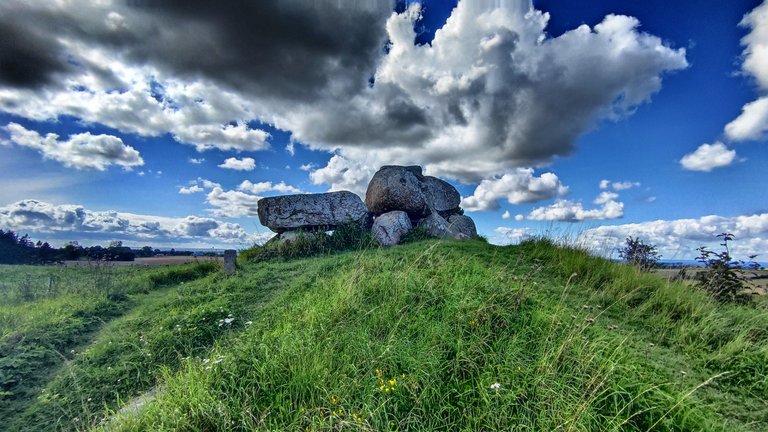 Back in Bronze times: One of the Dolmen
Back in Bronze times: One of the Dolmen
The people of that time must have transported the huge boulders from far away, in the Stone Age, when society was made up of scattered villages whose inhabitants only laid claim to their own cultivated land. There was no supra-regional ruler of the individual families at that time, nor was there a King Green, who was only invented by later generations to explain where it all came from.
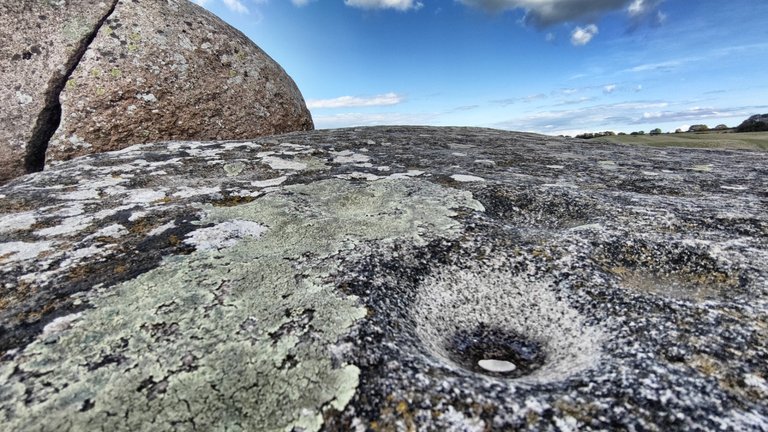 Who has made this hole thousand years ago?
Who has made this hole thousand years ago?
This made the ties of kinship within the families all the more important. Family ties could be the reason for the large and centralized cult sites that existed in the Stone Age, and for the grave goods in the burial mounds and passage graves. Shared sacrificial rites strengthened ancestral ties.
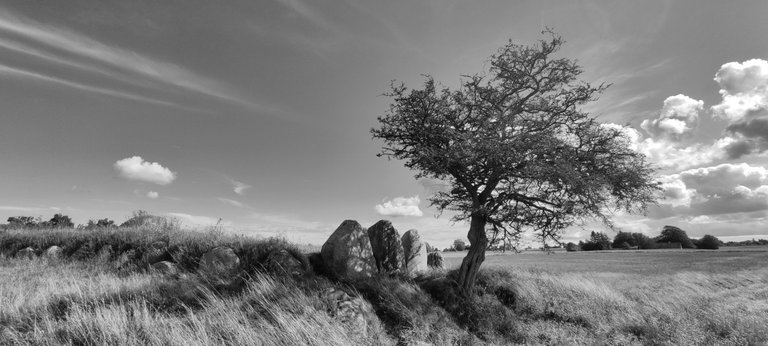 A landscape to remember
A landscape to remember
The Sømarke dolmen
Møn is full of such buildings. The Sømarke dolmen, for example, which was named after the nearby village, is a dismantled round dolmen from the Stone Age around 3,400 BC. The burial chamber, built of stones, was originally embedded in an earth mound; however, this was dismantled before 1880, when the Danish National Museum first registered the burial site, so that the stones could be reused.
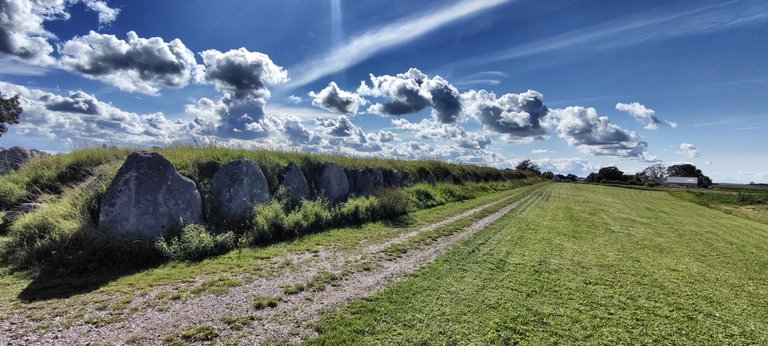 Made of giant stones: A Dolmen
Made of giant stones: A Dolmen
The curbstones that enclosed the mound were lost at that time, and the large capstones above the burial chamber were chipped off. As a result, the burial site remains in ruins. What an outrage.
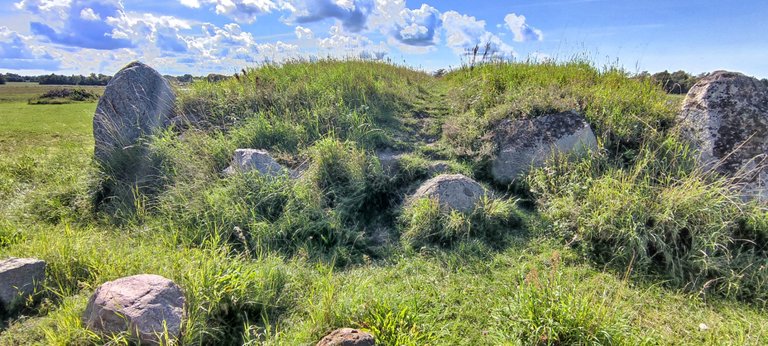 The remainings of a grave - or something else
The remainings of a grave - or something else
But what remains is still admirable. A narrow entrance led from the south-eastern grave foot to the chamber and on the large capstone above the chamber entrance you can see 445 worked bowls from the subsequent Bronze Age (1700 -500 BC). 10 bowls can also be seen at the upper end of one of the supporting stones supporting the chamber. The upper end of the large capstone has 3 bowls.
 Look inside the 4.000 years old stone pack
Look inside the 4.000 years old stone pack
Back to Bronze Age
In the Bronze Age, the bowls were the most common rock carvings and are known as symbols of infamy. These stones must therefore have been visible in the Bronze Age. The number of original megalithic graves in Denmark is estimated at 25,000. Ten percent of these are now known and protected by law. They are listed as historical monuments.
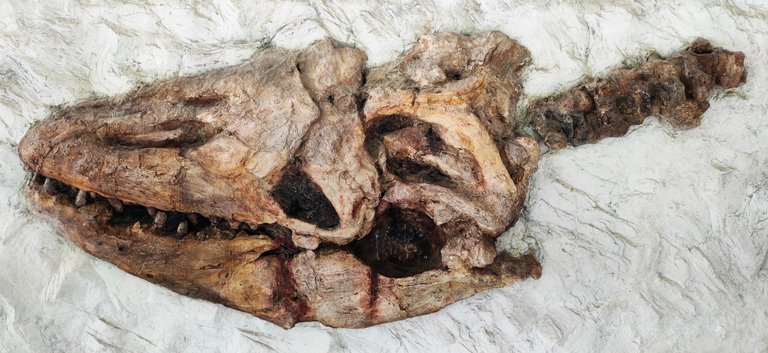 The Mosasaurus, master of Denmark before it become Denmark
The Mosasaurus, master of Denmark before it become Denmark
Similarly, the Mosasaurus, which can grow up to 15 meters long, lived in the Late Cretaceous period 70 million years ago and was the most dangerous predator in the sea of that period. A Mosasaurus was able to attack any animal, including other mosasaurs; this is why it was called 'the tyrannosaur of the sea'.
A monumental monster
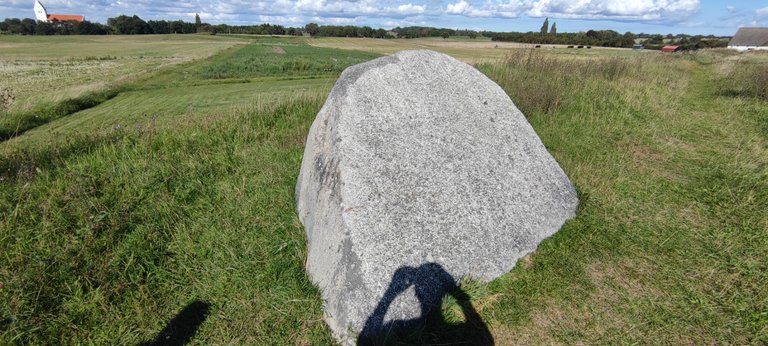 Me and an very, very old stone
Me and an very, very old stone
Its teeth were cone-like, only slightly curved and designed to tear flesh and bone, as in the case of this monster, found in a phosphate mine in the Negev desert in Israel in 1993, can be seen in Hjeml Church, the white sister of Elmelunde Church. The animal was about 12 meters long and weighed seven tons. Why here? Well, three teeth of the Mosasaurus species were found in the chalk cliffs of Møn - the monster was Danish.
Thank you for reading and if you like my work please follow me on Hive, Travelfeed or Steem or visit my homepage koenau.de
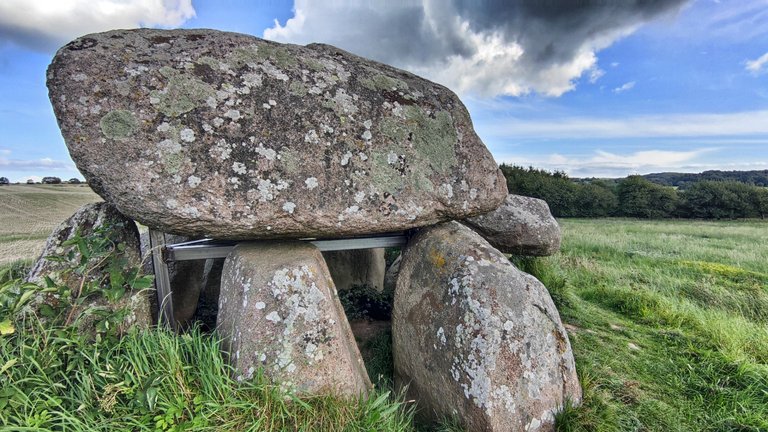 Maybe the monument of a king, maybe not
Maybe the monument of a king, maybe not
 The golf course from opposite side
The golf course from opposite side
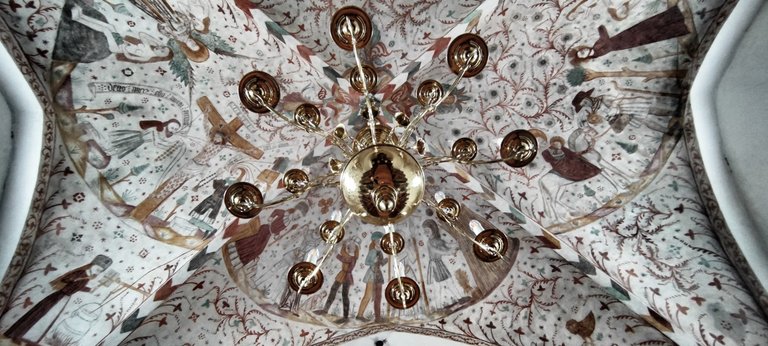 The roof of the church
The roof of the church
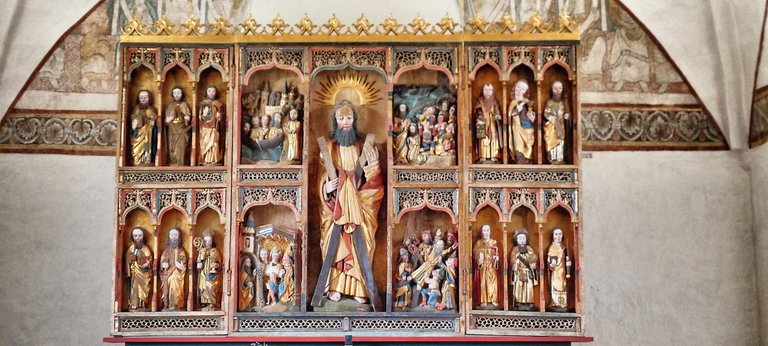
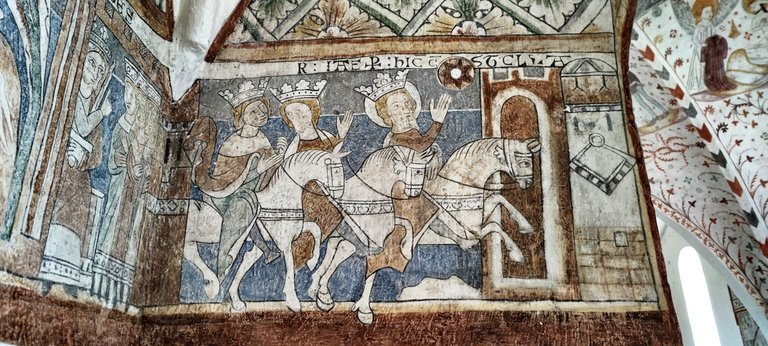
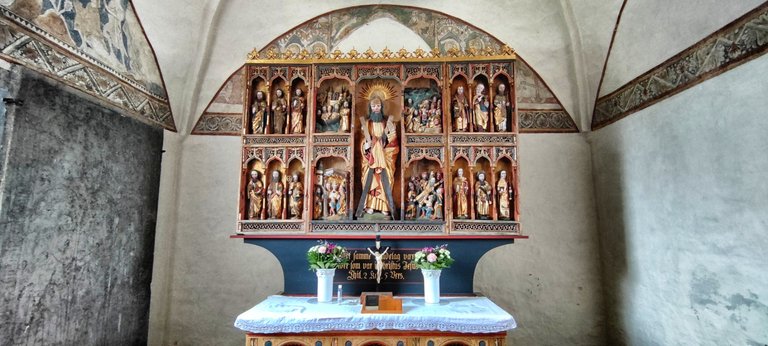
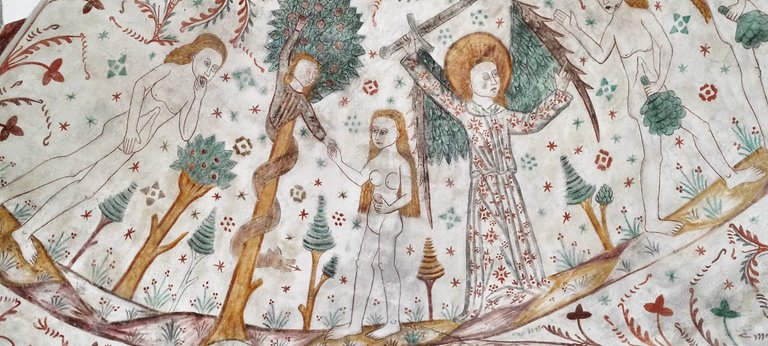

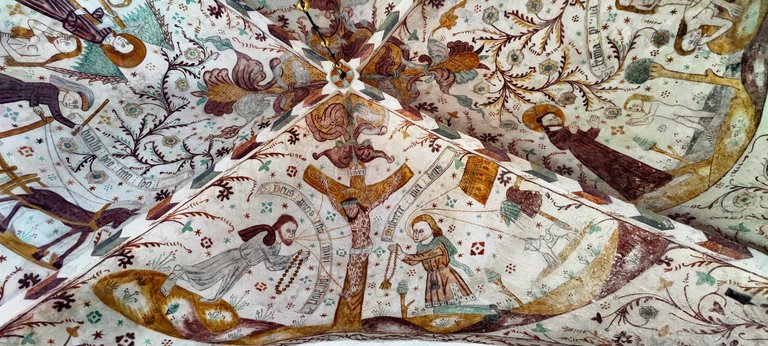
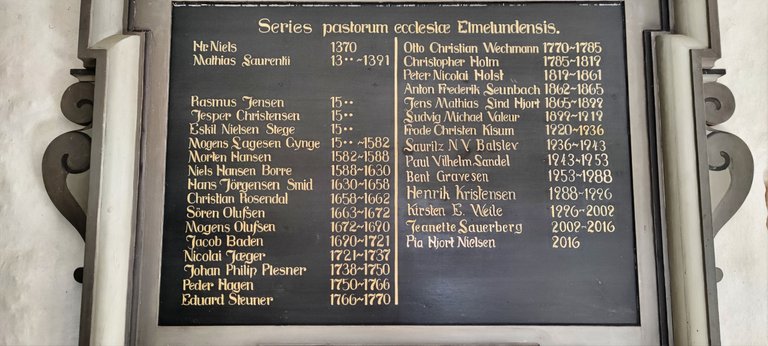 Priests, 700 years back
Priests, 700 years back
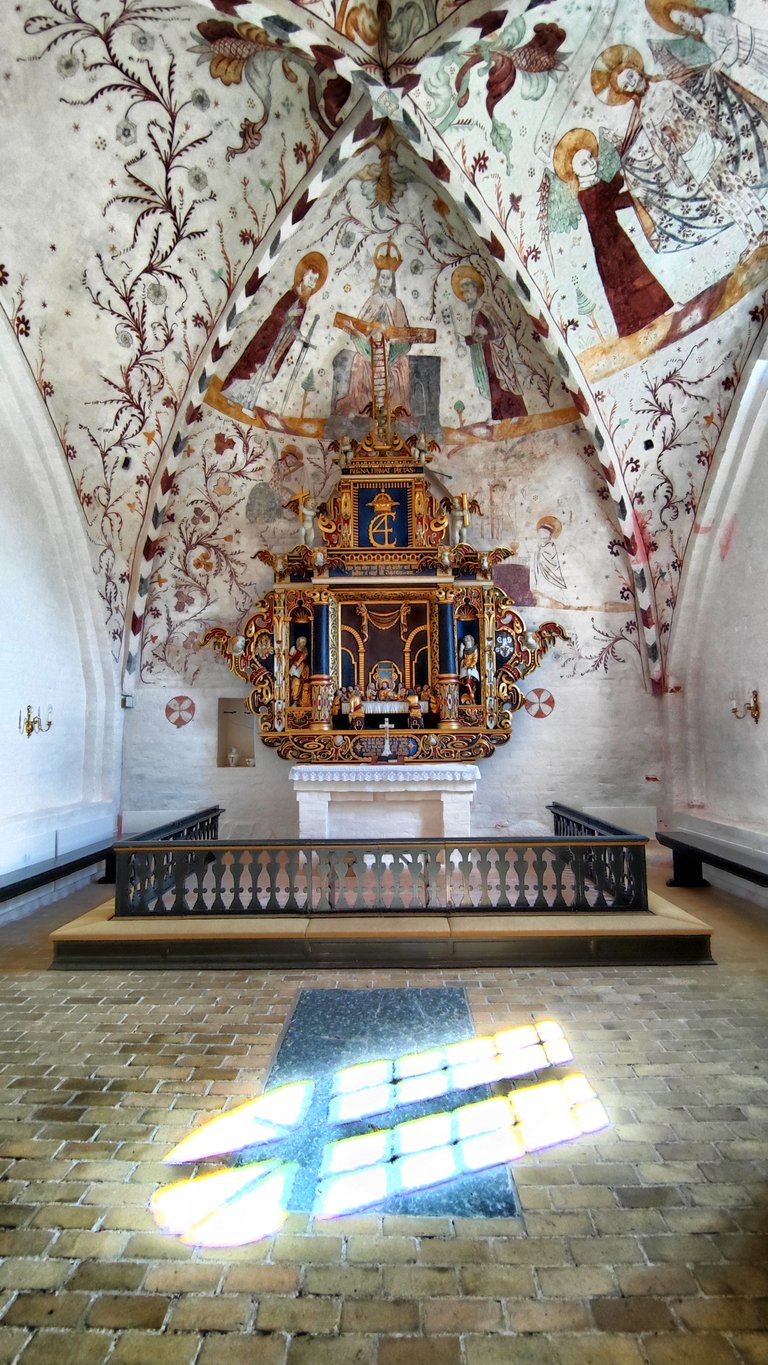 Isn't it beautiful?
Isn't it beautiful?
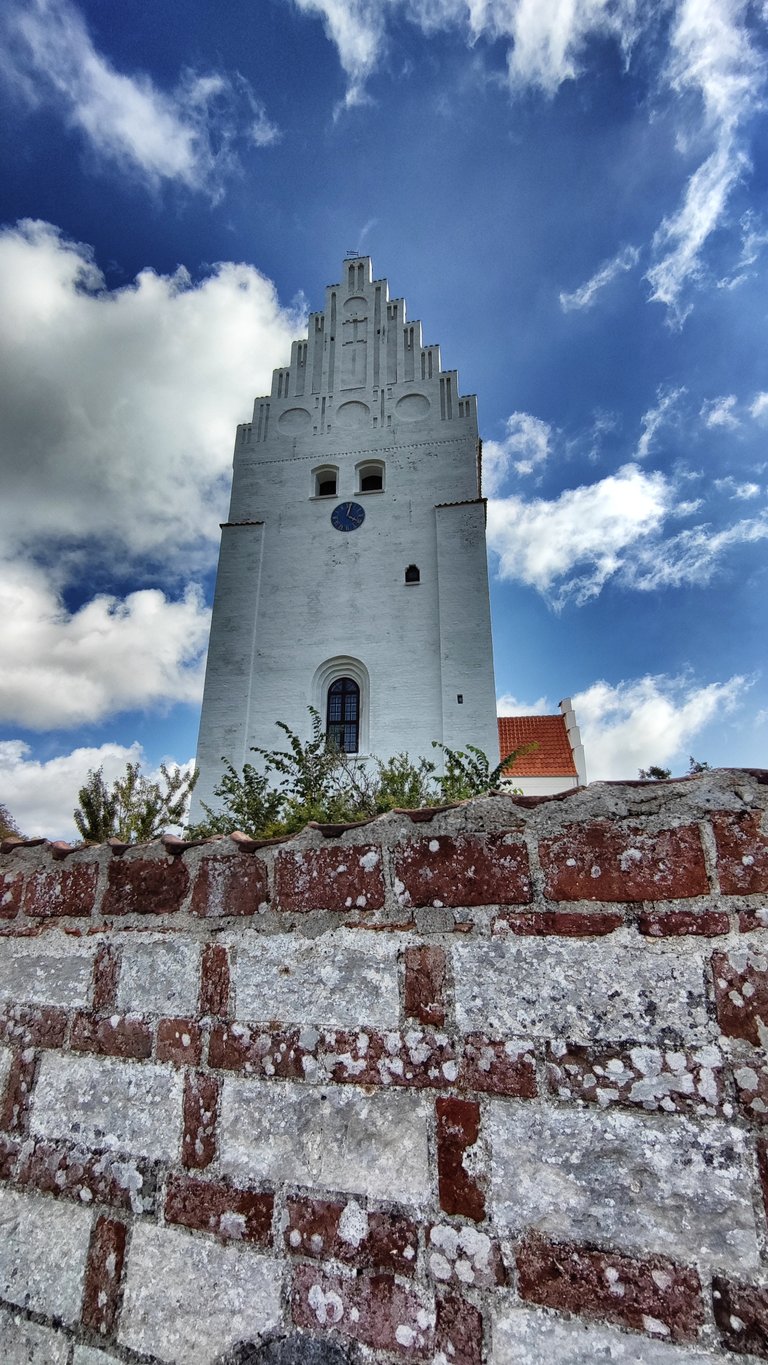
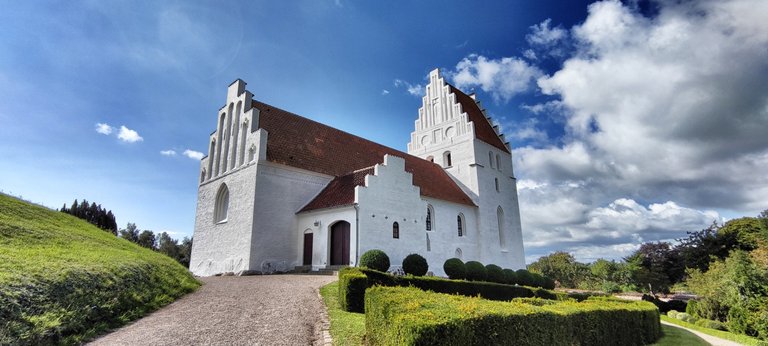
Congratulations, your post has been added to the TravelFeed Map! 🎉🥳🌴
Did you know you have your own profile map?
And every post has their own map too!
Want to have your post on the map too?
- Go to TravelFeed Map
- Click the create pin button
- Drag the marker to where your post should be. Zoom in if needed or use the search bar (top right).
- Copy and paste the generated code in your post (any Hive frontend)
- Or login with Hive Keychain or Hivesigner and click "create post" to post to Hive directly from TravelFeed
- Congrats, your post is now on the map!
PS: You can import your previous Pinmapple posts to the TravelFeed map.Opt Out
Congratulations, your post has been added to WorldMapPin! 🎉
Did you know you have your own profile map?
And every post has their own map too!
Want to have your post on the map too?
Hi, I really enjoyed reading your post. That looks like a fantastic walk with loads to see. Thanks for sharing - I'd never heard about it before this !
Cheers @hoosie
I was curious about the monsters, luckily it's the remnants of it.😊
Oh wow, the ancient sites on Møn look like a perfect mix of history and nature. What a great place to explore. !WINE
Travel Digest #2254.
Become part of our travel community:
- Join our Discord
Hiya, @ybanezkim26 here, just swinging by to let you know that this post made it into our Top 3 in Your post has been manually curated by the @worldmappin team. If you like what we're doing, please drop by to check out all the rest of today's great posts and consider supporting other authors like yourself and us so we can keep the project going!Have always wanted to visit the Danish countryside. Thanks for sharing
Congratulations @koenau! You received the biggest smile and some love from TravelFeed! Keep up the amazing blog. 😍 Your post was also chosen as top pick of the day and is now featured on the TravelFeed front page.
Thanks for using TravelFeed!
@for91days (TravelFeed team)
PS: Have you joined our Discord yet? This is where over 1000 members of the TravelFeed come together to chat. Join us!
Extraordinary👍
Congratulations @koenau! You received a personal badge!
Wait until the end of Power Up Day to find out the size of your Power-Bee.
May the Hive Power be with you!
You can view your badges on your board and compare yourself to others in the Ranking
Check out our last posts:
Congratulations @koenau! You received a personal badge!
Participate in the next Power Up Day and try to power-up more HIVE to get a bigger Power-Bee.
May the Hive Power be with you!
You can view your badges on your board and compare yourself to others in the Ranking
Check out our last posts: